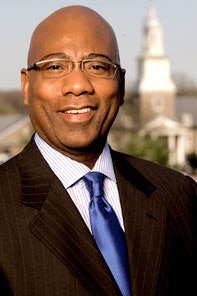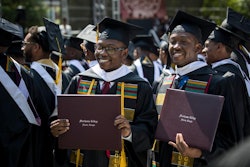Morgan State University contributes $990 million annually to Maryland’s economy and $574 million within the city of Baltimore, according to a study conducted by Philadelphia-based economics firm, Econsult Solutions, Inc.
Additionally, the university supports more than 6,500 jobs across the state, and almost 4,000 of those jobs are located in Baltimore.
 Dr. David Wilson
Dr. David WilsonThe recent study compiled data from the fiscal years of 2014-2019 and focused on the sectors of operations, capital investments, wage premium, student and visitor spending, commitment to community, innovation and economic opportunities forlocal and diverse populations.
Morgan State University, a historically Black school in Baltimore, provides education to 7,700 students and employs 2,100 people annually. It is a state-funded university and, in turn, has provided revenue and benefits back into the state of Maryland, according to the report.
Since its founding in 1867, more than 50,000 degree students have graduated from the university.
“Morgan is ensuring that an increasingly valuable commodity, a college degree, is achievable to more people, thereby increasing participation in today’s knowledge-based economy,” said Econsult Solutions, Inc. in their report.
Over the past six years, Morgan has expanded its campus and constructed three new buildings, including Martin D. Jenkins Hall, the Morgan Business Center and the Calvin and Tina Tyler Hall Student Services Building to the tune of more than $207 million in capital investments. The facilities have created jobs and generated statewide tax revenue, the report states.
Additionally, according to the report, Morgan students have engaged in more than 20,000 hours of community service.
“Morgan State University is an anchor institution in the city of Baltimore,” said Dr. David Wilson, president of the school since 2010. “It is important to have an outreach mission and for students to be connected to outreach missions. We encourage service learning and on one hand, it is a way for students to tackle the challenges of our city. Morgan is not going anywhere. We are anchored here, so it is important to focus on all our expertise to help out the community.”
According to the report, Morgan produces more technical-degree students than the state’s average. Nearly 17 percent of Morgan alumni are employed in STEM fields, comparable to Maryland’s average of 11 percent. Additionally, due to their Morgan degrees, alumni who work in Maryland earn a combined total of $464 million per year.
Through the various STEM degrees, Morgan has become a major innovation hub. Graduates are entering the workforce with new research and innovative ideas that develop into local start-up companies, the report states.
“A large percentage of our students are involved in the STEM departments, about a quarter of the students,” said Wilson in an interview with Diverse. “The STEM degree students make a higher salary and many graduates in those disciplines stay in Maryland for the tech-firms. As a result, a high percentage of the students are staying at the tech companies, which is generated back into the city.”
Wilson said Morgan has become Maryland’s preeminent public urban research university and wants to be considered one of the top 10 public urban research institutions in the United States. It has produced a new patent application at a rate significantly higher than the state and national averages after $10 million spent in research expenditures, according to the report.
Sarah Wood can be reached at [email protected]


















